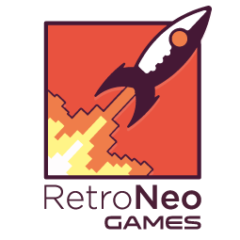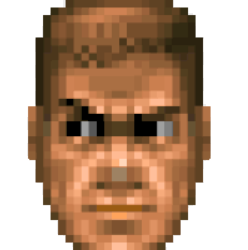
Welcome to the first instalment of Player Too, a new, semi-regular blog series about trying to make my girlfriend, Claire, a gamer too. If you’re a gamer and have a significant other, a brother, sister or best friend who isn’t, then this blog series may be for you.
Since this is the first episode, I just want to set the background before talking about Her Story (which I’ll keep spoiler free). I’m a big gamer, obviously. Claire, by her own declaration, isn’t. We share interests in travel, food, movies, TV shows, burlesque, etc but we never game together. I would like to share the magic of games with her and play some co-op or just spectator-friendly games. I don’t think we’ll ever be playing Command & Conquer or Half Life over a network, but there are all sorts of games out there designed to appeal to all sorts of people. I’m sure that if I can pick a few suitable titles, I might kick start her gaming engine. Claire is willing to try games I recommend in the interests of having new experiences, but doesn’t think she’ll ever call herself a gamer.
I’d like to define “gamer” for the purposes of this blog before continuing. Claire’s view and mine would be that the term ‘gamer’ as comparable to ‘hiker’, ‘jogger’, ‘cyclist’, or ‘reader’. If you have read a book, you’re not a reader. If you have climbed a mountain, you’re not a hiker. If you like Candy Crush and Sonic, you’re not a gamer. But if you regularly play games, purchase them, anticipate new releases, and consider them a hobby, then you’re a gamer.
My goal is to ultimately have Claire call herself a gamer. This blog will document our journey through different hand-picked titles, give a brief summary and review, and answer whether Claire would like to play more similar games or not. She’s up for the journey, and free to call it quits whenever she wants, so I’d better pick some decent titles. I’d appreciate any recommendations you fine readers may have.

I’ve tried to bring Claire into my gaming experiences before but without much success. A few years ago we tried playing LA Noire. Claire has quite acute detective skills, and I thought a game where you interviewed suspects and gauged their reactions might appeal to her. It sort of did but neither of us actually liked the game once we got into it. She’d get bored while I drove around the city and got into gun fights. Then I’d get bored “exploring” a crime scene by simply walking around waiting to press A when it told me to. Both of us were also a bit dissatisfied with the interrogation mechanic. If we would ‘doubt’ a statement, our character might explode and yell at the suspect, accusing them flat-out of murder. Great poker face, dude. It wasn’t what we wanted and we stopped playing.
Claire’s willing to play my game in development, Sons of Sol: Crow’s Nest, but it’s a skill based game and she’s not a practised gamer. It’s not for her, really. And that’s fine. I’ve also tried Nidhogg and BroForce with her. They’re fun for a bit but she’s not interested enough to get used to the controls. We have a few laughs and that’s it. They don’t stick with her.
I’m not starting from scratch here though. As a kid, Claire was big into Revenge of the Mutant Camels, Puzzle Bobble, and later Mario Kart 64 and Mario 64. And others, just not much this millennium . Claire does play Candy Crush. She explains that it’s just because she’s into puzzles. Sudoku and crosswords are more to her tastes. She also liked Angry Birds as it’s a puzzle game at its core.
She likes mysteries too, though, and she’s really sharp at connecting dots and making inferences in a TV show, book or movie. Better than me anyway. So when I saw a new mystery/detective game called Her Story, I thought this might finally be a game totally for Claire. I was interested as a game designer in the new type of gameplay. A bonus was that the controls are basically the same as using Windows so I could really involve Claire by letting her play instead of me “steering” like in LA Noire. If she’s not hands-on, I figure, she won’t ever feel like a gamer.
Her Story a new game by Sam Barlow, known for his work on Aisle and two Silent Hill Games. It’s about the player searching through archived police interview footage based on typing key words into a database search that can only display five results. You don’t know why you’re doing this but you start to piece together a story as you go along. If you’re worried about spoilers, I won’t say anything that the trailer doesn’t reveal already (which is nothing).
The game is remarkable in that it’s designed by one man, all of its content (except the search interface) is delivered through FMV (full motion video, which we haven’t seen much of since the 90s), and that there’s only a single actress for all of the scenes. Nobody else! Further, since the search results only display the first five results for a given search term (like “murder”), the designer had to be very careful with script writing so as not to overuse a word if he wanted it to be a key clue.
Claire sat down to play the game and I grabbed a pen and paper to take notes. We started by searching the term “murder” as in the trailer and watched the four results. These gave us clues as to other characters and places and we’d search them down too. The woman might say a name and we’d search for that name, finding the first five (as in, earliest chronological five) instances of the interviewee saying that name. The results might tell us that there’s 8 instances, however, and we’d have to be clever to try and find the remaining three, or even to prove to ourselves that the other three were new ones and not ones that we’d seen before while searching another term. It’s a narrative-driven game, but the real gameplay lies in using the search engine.
With each clue we’d hypothesize on what’s going on, then search new terms based on our theory, or hunch. It was quite enjoyable. Claire really got into it. We stayed up a little later than we should have for three nights together to get through the game, and if we’d talk on the phone during the day we’d each have a new theory we wanted to try out when we got back to it.

As it stands, we’ve found the majority of the videos, and pieced together the story to our satisfaction. You don’t have to get 100% completion to trigger the ending, and if you accept the end trigger you can still log back into the police database after the credits roll to search down the remaining videos. We’ve come back to it a few times with a new idea to find a few more videos, but no fruit yet.
Claire’s Score: 7/10. Very enjoyable but a little simplistic.
Player Too Result: Claire liked the game a lot. She’d be telling me to shut up so she could search down a term, and couldn’t wait to get home to play more. If that’s not symptomatic of a gamer, I don’t know what is.
So this was a good first attempt. The problem is that the game is fairly unique and there aren’t many similar experiences. We’d both definitely play more if Sam Barlow made a similar game, and there’s sure to be a few copycats coming out in the next few years as the game is doing quite well for itself, but there’s nothing similar that I know of currently. Its €6 price tag definitely helps get it into the hand of gamers. It’s a short game but I do think it’s worth more than that, and it’s not often I’d say that about a game at full price.
Next Time on Player Too: I’m not sure what to have Claire play next. I’m definitely up for suggestions. A Telltale Games series might be a good choice. Claire’s into Game of Thrones, though I’m not myself. I’ve already played the Walking Dead and would rather a different Telltale game instead of replaying that.
Maybe a point and click adventure game. I’m looking forward to Darkside Detective, an Irish game coming out later this year. It’s a humorous point and click detective game which arranges itself into separate ‘cases’, like an X-files monster of the week. This might be ideal but so far there’s only one short demo level. I do recommend it.
Any suggestions for us to play? Please leave a comment. Thanks for reading. Until next time..










